Creepypasta al Dente: Tall, Dark, and Faceless
By the pricking of my thumbs, something slender this way comes...
June ninth. 2009.
It’s a warm night in Nagasaki. Japan, even in the middle of the country, is notoriously sticky and wet during the summer months. Southern Japan most of all. The world outside is thick and damp, yet, inside one Eric Knudsen’s apartment, the air is crisp, cool, and tense, like a thin sheet of ice crusted over a murky sidewalk puddle. A stranger in a strange land, the American is up late, battling jet-lag induced insomnia the best way he knows how - rifling through the reams of pages on his online time-waster of choice, SomethingAwful.
In those days, SomethingAwful was a powerful force in online culture. Founded in 1999 by the late Richard “Lowtax” Kyanka - a polarizing figure in the early internet era who would only grow to be more controversial until his premature death at his own hands in 2021 - the site was a veritable walled garden, hidden behind a paywall that required a humble offering of ten dollars for entry. Even though goons, as the userbase called themselves, were relatively small in number, their memetic output and the influence they had vastly outstripped their size. It’s arguable that, in the mid-Oughts, SomethingAwful’s memetic influence eclipsed the much larger and much more infamous internet hate machine, 4chan. Memes spawned from the burbling pit of sin that Moot wrought tended to be both pervasive and influential, if not ubiquitous, throughout the early internet, but SomethingAwful memes had a way of making their way off the pages of the internet and creeping out into meatspace. For example, even though the timeline is a bit murky, it’s believed that the popular meme format of image macro, which would eventually be co-opted by Reddit in the early 2010’s and become the standard template of what is still, to this day, largely referred to as an internet meme in its most base form, developed behind the paywall of SomethingAwful in the form of Advice Animals.

While SomethingAwful’s contributions to internet culture, history, and lore are legion, that night in Nagasaki, Eric Knudsen would add his own to the catalogue when he stumbled upon a thread simply titled, Create Paranormal Images. The thread, amazingly, is still extant, and accessible here, should you want to peruse the contents. They are… unremarkable, by and large. At least, in my opinion. But, Eric would find himself struck with inspiration. Opening Photoshop, the adept graphic artist would draw up two pictures to contribute, and, uniquely, post snippets of text to accompany them. Under the nom de plume Victor Surge, Eric posted the following:
We didn't want to go, we didn't want to kill them, but its persistent silence and outstretched arms horrified and comforted us at the same time…
— 1983, photographer unknown, presumed dead.
This was the accompanying image.
A second image followed shortly, joined by the text:
One of two recovered photographs from the Stirling City Library blaze. Notable for being taken the day which fourteen children vanished and for what is referred to as "The Slender Man". Deformities cited as film defects by officials. Fire at library occurred one week later. Actual photograph confiscated as evidence.
— 1986, photographer: Mary Thomas, missing since June 13th, 1986.
I doubt that Eric Knudsen could have imagined that these two simple, unsettling photos, made on a lark one humid and sleepless evening in Southern Japan, would be the debut of one of the internet’s most infamous, persistent, and unnerving pieces of folklore. This unnamed figure would capture the imagination of fellow SomethingAwful goons, who soon began to contribute images of the tall, faceless, tentacled thing of their own creation.
Little by little, bit by bit, they built a vague yet coherent lore around the entity. It would take some time before one name of the many ascribed to it would stick as the one by which it would be most widely known. That night - the ninth of June, 2009 - the internet, and the world at large, would meet Slenderman.
For a moment - a brief but intense moment - Slenderman cut a legitimately terrifying figure. Within mere days of Eric Knudsen’s original post, on June 20th, 2009, amateur filmmakers and fellow goons Troy Wagner, Tim Sutton, and Joseph DeLage of Tuscaloosa, Alabama, would supercharge the Slenderman phenomenon and revolutionize online horror content when they published the first entry in the online horror series and alternate reality game, Marble Hornets.
As the name Slenderman had even yet to be uttered, in the series, the entity is known by the simple yet chilling moniker, the Operator. I remember watching these videos as they were released, binging them late at night in my family’s study, every light on the first story of the house turned on, blanket cinched tight around my head, and scared absolutely fucking shitless.
Our home's study sat in front of the front door, which had a window set into it. If you watch the above video - go ahead, it’s less than a minute long - you will probably understand why, for years afterwards, I had difficulty walking past it late at night. I still avoid open windows at night and ritualistically close every set of blinds in the house around sunset, albeit for… different reasons, these days.
The impact of Marble Hornets cannot be overstated.
Currently, a genre of online horror called Analog Horror is having a moment. Analog horror, as the name suggests, relies heavily on the conceit of being supposedly found footage or lost media that was either captured through analog recording or, at the very least, draped in the aesthetic and visual style of analog technology. Marble Hornets was an early pioneer of this style, at least, on the internet. Films such as Paranormal Activity and the genre defining Blair Witch Project typified the concept of found footage long before Marble Hornets was ever conceived, but I’d argue that the small team behind Marble Hornets took the idea and perfected it, or, at the very least, brought it into and retrofitted it for the internet age.
This is to say nothing of the Alternate Reality Game, which is a form of interactive media that relies on user-interaction and puzzle solving that blurs the line between reality, game, and media, involving the audience-cum-players as participants of the unfolding story, who have both agency to influence the plot and characters, or who’s participation is required to progress the tale.
Like the genres of analog horror and found footage, Marble Hornets was not the first ARG. The Wyoming Incident - an ARG that continues to this day - began in 2006, three years prior to Marble Hornets. Famously, the marketing team at Bungie Studios used the concept to great effect with the campaign i love bees in the lead up to the highly anticipated release of Halo 2 in 2004. General consensus seems to be that the first internet ARG can be traced back to the obscure Ong’s Hat of 1993, which feels like a proto-creepypasta in and of itself.
The in-universe protagonist of Marble Hornets - Jay - communicated with viewers not just through videos, but an active Twitter page. Troy Wagner, who portrayed Jay on film, would interact with the audience directly through this account in character, using it to answer questions, drip feed information to the audience, or, in some cases, offer a subtle hint to push the crowd along if a puzzle or cryptic message turned out to be a little too cryptic, all as if Jay was a very real person involved in a very terrifying situation. Imitators such as the popular EverymanHybrid and Tribe Twelve were soon to follow, along with many, many others. Even though EverymanHybrid never matched the sheer scare factor of Marble Hornets, and lapsed into what I can only describe as moments of extreme camp throughout its decade-long run, it was an admirably ambitious project that gradually moved beyond the Slenderman trappings and developed a unique mythology of its own.
Tribe Twelve, on the other hand, was an equally ambitious one man project that gradually moved beyond the Slenderman trappings and became a way for the creator to creep on minors on the internet.
Of course, there was also the monumental game, Slender: The Arrival, in which the player would attempt to collect pages and other MacGuffins in a dark forest while being pursued by Slenderman. Released in December of 2012, this game took Slenderman from relative obscurity to widespread recognition, as well as kickstarting the Let’s Play phenomenon that would dominate YouTube for well over a decade and set the stage for the immense popularity of video game streaming. Figures such as Felix Kjellberg and Mark Fishbach - Pewdiepie and Markiplier, respectively - would begin their towering careers as YouTube icons with other games, but it would be Slender: The Arrival that brought them to a wider audience and began their rise to internet stardom, positions both still enjoy to this day. So, if you ever caught yourself wondering how a charisma-vacuum like Markiplier or some random Swedish nobody like Pewdiepie could become multi-multi-millionaires… you know who to thank.
This is all to say that Eric Knudsen, with two simple images, altered the course of online culture, if not popular culture across the globe, irrevocably. Perhaps streaming, let’s plays, analog horror, and alternate reality games would have all found popularity in time, even without Slenderman to give them their initial boosts, but I reckon the digital and cultural landscapes would look vastly different today if the presence of a certain lurking, faceless horror had not been there to lift them into the limelight with his writhing tendrils.
But, there’s a reason that the best monster movies make scarce but effective use of their inhuman stars. Famously, the eponymous alien in Alien appears in only brief glimpses throughout the film until the end.
Even the most frightening monster begins to lose that knee-jerk reaction of Jesus Christ, what the fuck!? the more you’re exposed to it. After the twelfth time you stare down the slavering maw of the alien, it may remain repulsive, yes, but it isn’t scary. Not in the way it was when it was lurking about the periphery of your vision, little more than a blur of motion or a distant figure that quickly vanishes into the shadows, and you had no idea what the hell it was. The more the internet saw of Slenderman, the less fear he managed to instilled.
And it didn’t take long for the internet to do exactly what the internet does.
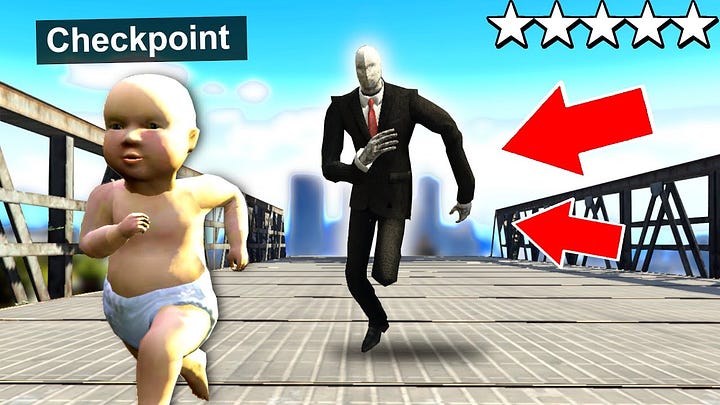

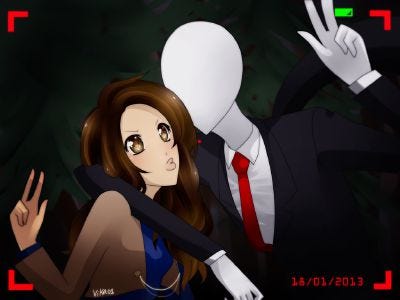
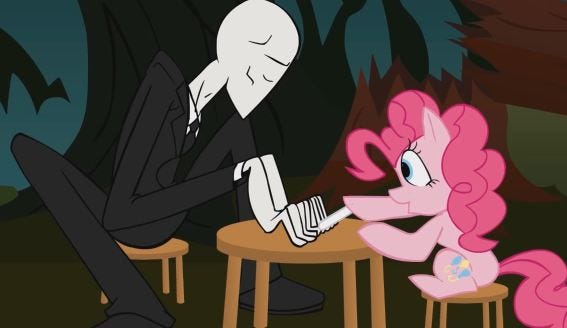
Suddenly, you weren’t liable to see the vague, odious silhouette of Slenderman looming in the fog or peering through your bedroom window. He was now clogging the Most Recent page on DeviantArt, hanging out with doe-eyed anime girls, popping up in barely coherent r/nosleep drivel left and right, standing at your doorstep on Halloween with a pumpkin-shaped bucket asking for candy with a pronounced lisp, or creeping about the lonely hotel hallways of comic and anime conventions, only to be seen later that night slugging shots of Jaegermeister with Sailor Moon and Deadpool, if not busting it down on the dance floor of the convention rave.
But it wouldn’t take all that long for Slenderman to remind us why he was so terrifying to begin with.
May thirty-first. 2014.
Twelve year old Payton Leutner is invited by friends Anissa Weier and Morgan Geyser to play in the nearby woods outside of Waukesha, Wisconsin. What happened next, I’m not entirely sure, but Payton Leutner ends up pinned down on the forest floor and stabbed nineteen times. By the grace of God, Leutner clung to life long enough to drag herself to a nearby road, where a passing cyclist found her and called for help.
Thankfully, Leutner survived her injuries. Apparently, one stab wound came within a millimeter of severing a major artery. She was able to resume school within a week.
Weier and Geyser were apprehended within hours of Leutner being found by a good samaritan. When interrogated by the police, they confessed to having chosen Leutner as a sacrifice for none other than Slenderman. Their motive? Something about being allowed to visit Slender Mansion, which they believed was in the woods near Waukesha, and only accessible to those who offered suitable sacrifice to the faceless proprietor of the place.
The effect that this murder attempt by two prepubescent girls triggered a chain reaction across the internet. The community that had built itself around the concept of creepypasta was thrust into a national spotlight. For the first time, many people found themselves exposed to the term.
What is creepypasta, exactly?
The short answer: written horror content posted on the internet.
The long answer?
Well, I think you could justifiably say there’s two answers.
The first is that it is a catch all for any type of horror literature published to the internet. This is the way the term is most usually understood and applied. For instance, the Creepypasta Community is filled with scads of colorful, monstrous characters - of which Slenderman is an adopted member of the pantheon - that spawned from websites like the Creepypasta wiki, DeviantArt, 4chan, and beyond. It’s really that broad.
Right this second, I could hack out a ten page long story about, er… Naughty Nina, a psychopathic ten year old with a penchant for murdering babysitter and my totally original the character (do not steal), slap it up on DeviantArt, and bam - I’m a certified Creepypasta author. A Creepypasteur, if you will. Look - I’m so legit that Naughty Nina even got retroactively added to this lovely collage of various creepypasta characters. She’s right up there, near the front, with the pink cardigan and green eyes with blood pouring from them. I mean, you can’t miss her, she’s, like, one of the three or four fucking characters that aren’t just some bishounen, metrosexual anime boy.
What can I say? I’m a champion of diversity.

This broad term fails to really capture the true spirit of what separates creepypasta from general online fiction that just happens to be horror - nominally, at least, since I’m not sure all the k-pop boy band rejects above are really all that scary, or at least, no more frightening than Jimin or Jungkook of BTS fame would be if they were chasing me with a knife.
The second - and more accurate - definition is that creepypasta is, first and foremost, short-form horror stories published to the internet, often anonymously, that cover a wide range of subjects and topics. The short part is imperative. I think what makes creepypasta creepypasta and not just horror fiction is that it’s short. Snappy. Maybe a couple pages at most, but it’s lean prose. No fat. It had to. Both the term, and arguably the concept, first arose on 4chan’s Paranormal board - /x/ - where it was used to describe short, often one-post long (but no exclusively) snippets that were copy and pasted from thread to thread. The term creepasta itself is a corruption of copypasta, which was a term used on 4chan to describe any kind of copy-pasted text that was frequently reposted on the site. Copy-paste - copy-pasta. You see the connection, I’m sure.
Here’s an example:
As time went on, creepypasta became more elaborate, often spanning several posts instead of just one. For example, the above post would be the first of many entries into the SCP lore, soon spawning a separate website where others would create, share, and post their own SCPs, until it turned into the internet juggernaut that is the SCP Foundation today - an immense, sprawling collaborative mythos that has multiple video games, published works, and fan films under its banner.
But, at it’s heart, creepypasta are still simple, short, effective, and, of course, and most importantly, creepy. Here’s another, more recent example, from 2019, and by far one of the most unnerving and effective I’ve ever seen.
You might have seen this image before. You might have heard of the Backrooms, even if you haven’t. This is because, just like the SCP Foundation, even something as simple as this one post managed to evolve into an elaborate mythos unto itself.
If you’ve heard of the Backrooms, it’s most likely because of Kane Pixels - a YouTuber who released this little gem a year ago.
Good stuff, right? Short. Simple. Spooky as hell. And now?
Between Slenderman, the SCP Foundation, and the Backrooms, you’re probably beginning to see that these simple concepts end up starting simple and turning into vast, sprawling mythos that are so bloated and stuffed with content that they become esoteric and inaccesible to the average person. They start small, and take on a life of their own.
Take on a life of their own.
That’s an funny way of putting it, isn’t it?
In this series, I want to come back to the SCP Foundation, the Backrooms, and the Creepypasta Community1 in the future, as I think they all represent an intriguing and unique phenomenon that embodies certain shifts, trends, and ideas within both online culture and the popular American zeitgeist, so, stick a pin in them and tack them to the cork board. This ain’t about them right now. The Backrooms entities, the Foundation, Naughty Nina - they can all wait their turn.
Let’s return to the eldritch abomination of the hour.
I remember during the initial surge of popularity behind the character, a lot of people were taken with how different the entity was. On the contrary, I don’t think Slenderman was really all that unique - just an old concept repackaged for a modern audience in a novel way.
Let me show you something curious.
This is a creepypasta creature known as the Rake - a pale, hairless humanoid that runs on all fours, and, needless to say, is not something you want to run into in a dark and dense forest. Though the timeline is murky, the Rake’s debut creepypasta seems to have popped up on 4chan’s /x/ board arround 2007, predating Slenderman.
I never was all that into Buffy the Vampire Slayer, but I do remember catching a rerun with these awful bastards in it. These are the Gentlemen, from an episode that first aired in 1999. Not faceless, perhaps, but pale, tall, dapper, and Christ almighty were they creepy.
Remember this ugly fucker from Pan’s Labyrinth, back in 2006?
In 1967, the Question debuted in the pages of DC Comics. Maybe not as creepy as the other fellows on this list, but faceless and well-dressed, all the same.
In 1990, horror author Clive Barker would adapt his short story, Cabal, into the infamous cult hit Nightbreed, in which, strangely enough, acclaimed director David Cronenberg, would play the protagonist’s therapist, who was also the masked serial killer, Buttonface.
Even Knudsen himself said that he took some inspiration from the 1979 horror film Phantasm - another horror cult classic with a sci-fi twist that is best known for Angus Scrimm’s turn as the iconic and intensely creepy Tall Man.
This might be a bit of a stretch, but in 1893, Norwegian artist Edvard Munch would paint one of the most famous paintings in the canon of Western Art:
The Japanese - who seem to have a ghost or ghoul for every occasion - have long told stories of the Noppera-bo, which is a ghostly youkai that wanders lonely roads at night, waiting for some passer-by to stumble upon them, at which point they reveal that they have no face.
Interestingly, the Noppera-bo are not child-abducting eldritch horrors, just one of those good old fashioned spooksters. They just wanna give you a good fright - a story you can tell to your friends over a beer or something. That’s all. They’re too busy doing the Monster Mash with the cartoon werewolves and witches and swamp things to bother ripping you limb from limb.
Another youkai that is not so harmless is Hachishaku-sama - literally, Miss Eight-Feet Tall. This entity is a spectral woman that is - you guessed it - eight feet tall, always dressed with a wide-brimmed hat and white dress, that is less interested in doing the Monster Mash or showing you a ghoulishly good time, and more invested in abducting or killing wayward children.
Someone let Slenderman know that we found the lady of his twisted nightmares.
And, uh… y’know, if he’s not interested, I mean… I always had a fine appreciation for ladies that are tall, lean, and kinda mean, so, like… Miss Tall, if you’re looking for your a short king who’ll treat you right, baby…
My DMs are always open.
EDIT: Shortly after publishing, some of my followers have also brought examples of this trope to my attention that I was not aware of. As I think it only furthers my point of, Damn, people really hate things that are tall, white, scary, and thin - Nikola Jokic, Dirk Nowitzki, and other freakishly tall caucasian NBA players not withstanding - I felt obliged to include them on this list.
Jon of Notebooks of an Inflamed Cynic mentioned the alien monster from the 1983 sci-fi horror movie Xtro as having a strong resemblence to the Rake.
Given that some of the original stories to first feature the Rake do, indeed, involve a car passing something white, inhuman, and creepy on a lonely backroad at night, I’d reckon he’s right in his guess that the original author might have taken some inspiration from this movie.
Xtal made mention of the Strangers from the 1998 film, Dark City, which I really do need to get around to watching one of these days, and, uh…
Yeah. I see the resemblence.
Jokes aside, Slenderman is not something new so much as the most recent, and perhaps the most notorious, incarnation of a trope that’s been around for quite a while. Humans, apparently, have an aversion for tall, quiet, usually faceless, often well-dressed… things. Though I couldn’t find any specific instances of tall and faceless entities in European fairy lore, though a few do come close - most notably, the grotesque, centaur-like, and indisputably evil nuckelavee, hailing from the windswept Orkeny Isles of Western Scotland, which both dwarfes the average man in size and possesses lanky, spindly arms so long that they drag along the ground beside it. Malicious water spirits such as the kelpie and nixie of Germanic lore are also capable of shifting shape. When in human form, they’re almost always described as pale, albeit usually possessing otherworldly beauty to better lure horny men to a watery grave. Even in their most common depiction as horses, I’ve never encountered an interpretation in which their coats are anything but white. Not the most diverse or inclusive, are these fair folk, hm?
Of course, the argument can be made that, well, of course fairies of European folklore are going to be fair-skinned, given that the complexion of the people who would have been telling those stories, but I think that’s a bit reductionist.
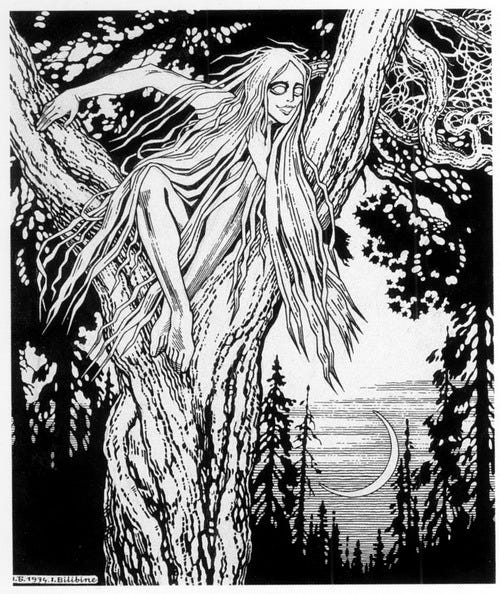
Regardless, there is something distinctly fairy tale-esque about Slenderman - a tall, faceless man, out in the woods, calling to children, enticing them to commit terrible crimes and violent acts before spiriting them away to some dark otherworld. Fairy lore is lousy with various beings that make a sport of abducting not just children, but humans in general. Many of them are pale and humanoid. It’s a staple of folklore around the world. Despite his choice of attire, there’s something equally timeless about Slenderman, as well.
The entity does really feel like something that could have been around since time immemorial, lurking about the shadowed forests and the edge of civilization, cycling through different incarnations, adopting the clothing of whatever culture that may interact with it at any given time. Perhaps it all depends on who’s looking.
Perhaps Eric Knudsen unwittingly tapped into this… this trope, this concept, this meme, if you will, that seems to be hard-coded into us. It’s not that he was totally unaware of them. As stated before, in an interview, he specifically sites the Tall Man from the film Phantasm as being a chief inspiration for Slenderman.
Though he has a face - and a very unsettling one at that - he is, as the name implies, tall. He’s quiet. He stalks the young protagonist, a seemingly inescapable, inhuman, fundamentally alien presence that’s can never quite be outrun or shaken. He doesn’t say much more than a handful of lines throughout the film, either, and cuts a menacing figure that almost exudes a sense of paranoia.
You can see the parallels, surely.
But, the thing is, I’m not sure if Eric Knudsen knew just how deep these parallels ran not just with Phantasm’s the Tall Man, but a whole slew of figures from both modern pop culture and mythology we’ve explored.
What is it about this meme of a tall, quiet, faceless, imposing, well-dressed humanoid with a penchant for abducting children that keeps us fascinated? Why does it keep cropping up, again and again and again, in our media, culture, and folklore?
Here are some possibilities. There are more, of course, and many more that are much more conventional, rational, and sane than these, but… well, there are plenty of other people who will give you boring rational explanations. We do schizo here, okay?
So, what are we dealing with here?
It’s the drip. The aesthetic of Slenderman and adjacent figures is just one that looks creepy and I’ve read too much on the paranormal. This is the most likely answer.
It’s the drip, but it goes beyond just looking spooky. These traits are, for one reason or another, qualities we evolved as a species to be wary of when taken together, or triggers our uncanny valley sense. For instance, being deathly pale triggers our sense of revulsion towards corpses, which is an instinctual survival mechanism designed to keep us away from what could well be a disease vector, and thus, when put together, we have a figure that triggers our survival instincts for a myriad of reasons.2
There is or was something that exists or existed that possesses those traits that ingrained itself into our genetic memory.
It is some sort of egregore, gestalt being, or some other form of spiritual or incorporeal intelligence that either represents itself in such a way, or has adopted the appearance, created or summoned by the collective unconcious of the internet.
I’ll leave you to decide which, if any of these options, you think is most likely. Is it one? Is it some? Is it a bit of all of them? Well, think about it as I continue.
In my opinion, Slenderman is not just another run-of-the-mill monster, or some boogeyman of the internet age. The genre of creepypasta - if you can rightly call it that - generated a whole host of popular, monstrous characters that I only briefly touched on.
There’s a reason we’re not talking about them in particular. At least, not yet. As you can see from this image, it isn’t just become some of these monsters are just corruptions of pop culture figures, like the oh-so terrifying Evil Sonic the Hedgehog, Evil Mickey Mouse, Dead Homer Simpsons, Dead Squidward, so on and so forth. There are more original characters in the image above than derivatives from other works. There’s the aforementioned Rake, Jeff the Killer, Jane the Killer, Z̶̧̻͍͈̺̥̲̣̮̯͕͊̅̐͑̊͐̂̐̔͛̈́̓͝͝ą̴̨͇͙̪̱̰̞̺̓̑̍̑̆͝ͅl̶̛͖̦̱̫͈̪̣̱͛̒̈́͌̏̽̿̈͘̕g̴̡͖̮̮̹̟̻̞̍̂̅͋̔̂̄̂͘͝o̸̦̜̊̋̊̉̄̉̉̚͠ ̴̨̙͉̤̱͍̈́̏(̵̧̖̻͍̭̥͉͕͋͂̏͂͋͜h̸̨̡̳̰͕͕̬̬̘̏̃̏̂͆͝͠ḙ̷̝̺͖̲̆͆̇͐̓̀̚ͅ ̶̞̭̪͇͔͔̏̏̑͘͘c̴͕͎̞̏͆ǫ̸̜̠̬̼̓̀̄ͅm̵͓͕͎̘̓̍͋̔̏́̓͑̄̚͝͠ẽ̴̪͖͖̣͇͙̰̂͐̀͋̐̅̀̎͐͋̚͠͝͝s̵̡̡̛̰͓̣̟̪̗̯͉̥̦̭̯̪̈́̉̔͊̌̽̐̑̏̈́̈́)̶̡̗̙̺͈̬̈̃̿̈́̒̀͊͊̚, Smiledog, Smiledog 2, the thing from The Russian Sleep Experiment, the Skintaker, That Man, Naughty Nina, the Seed-eater, Mister Widemouth, Laughing Jack, and Gandalf the Gray and Gandalf the White and Monty Python and the Holy Grail’s Black Knight and Benito Mussolini and the Blue Meanie and Cowboy Curtis and Jambi the Genie3. Even though some of the stories these characters come from are quite good in their own right, they just didn’t capture that timeless quality that Slenderman did.
Take the story of Jeff the Killer - easily the second most popular character in the creepypasta genre behind evil Stretch Armstrong himself. And, if you were wondering just why so many of these creepypasta characters are just a generic white guy with a knife and maybe, like, blood dripping out of his eyes… Jeff the Killer is what started that trend.
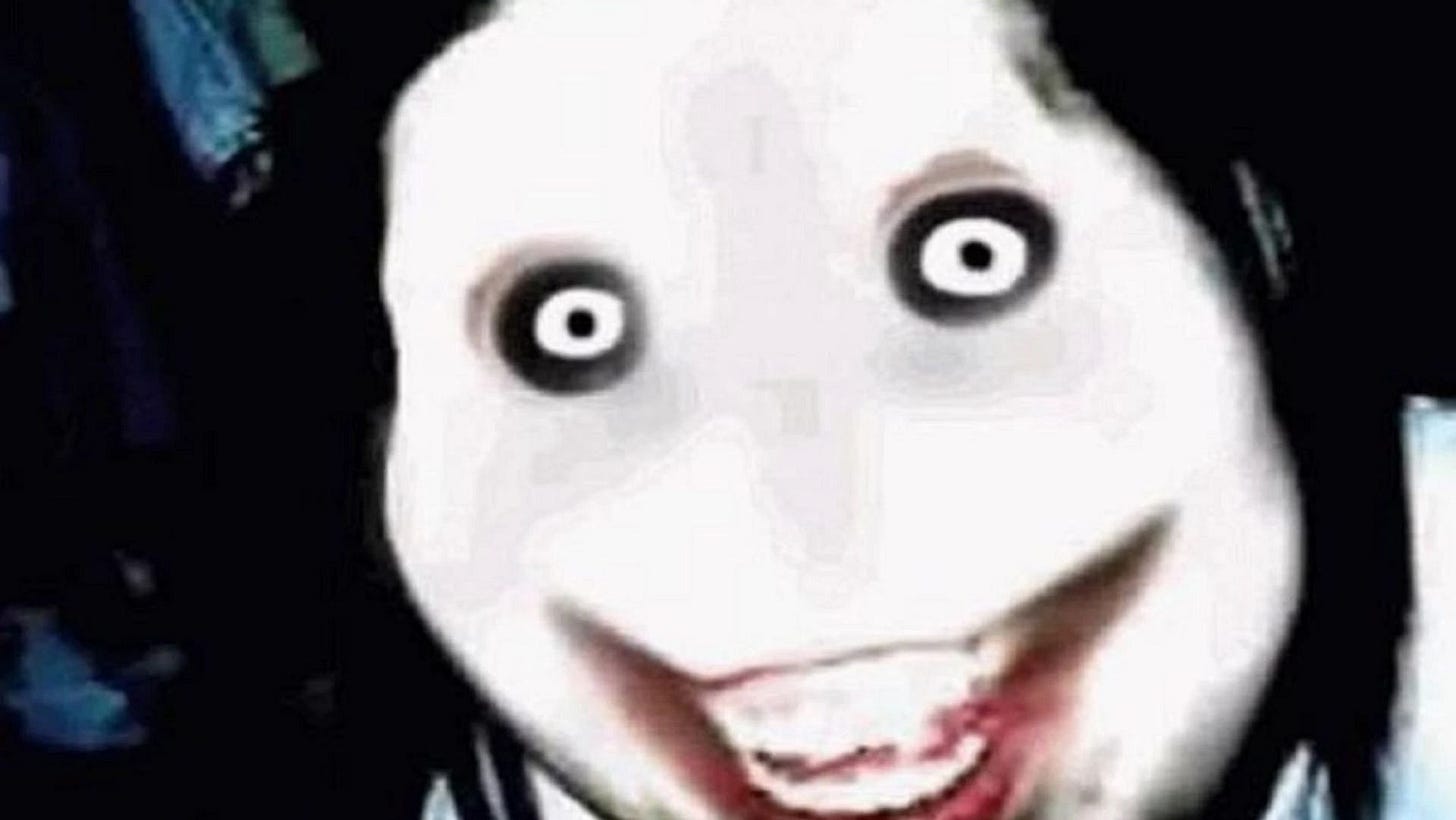
I remember that picture scared the shit out of me when I first stumbled across it late at night while trawling /x/, but, these days, it almost looks more funny than anything… still don’t like staring at it for too long, though. What separates Jeff the Killer from Slenderman are many, but two chief reasons stick out to me the most.
For one, Jeff the Killer is just a guy with a knife. He got burned or something and bleach fall on him so his skin white and, yeah, basically, he’s the Joker but even more homicidal. In the mediocre story that spawned him, Jeff the Killer displays extraordinary feats of preternatural skill, but, ultimately, he’s pretty much just a guy with a knife. Fortunately, with the right tools, a guy with a knife can be a pretty easy fix.
But, ya ain’t gonna shoot Slenderman. Or, you could, but it probably won’t do much.
More than just that little fact, though, is that Slenderman doesn’t really come from just one story like Jeff the Killer. Media like Marble Hornets and various creepypasta helped codify the tropes that would define the character, such as the Operator symbol, which, in Marble Hornets, was never something you wanted to see graffiti’d on the wall of an abandoned house or sewer tunnel.
But there was no one story that gave birth or defined Slenderman. His creation was a collaborative effort. No story or video series portrayed him exactly the same way. There were always various quirks between the depictions. Some contradictory. You didn’t know what to believe, or what was true about the character. What might be effective at repelling him in one series may not have worked in another - and that was assuming there was a means to ward the entity away, or, if nothing else, a way for the protagonist to delay the inevitable. Even the entity’s motivations are a mystery. Does he stalk to protagonist to drive them to madness and suicide? Does he want them them to stalk other people to madness and suicide? Does he demand sacrifice to sustain his own existence? Is he just having a goof and taking the piss at humanity’s expense?
In the best Slenderman stories, it’s never explicitly stated why the entity does what he does. And if you can’t understand the thing’s motivations… how can you hope to understand it well enough to fight it?
Watching Marble Hornets for the first time, I can recall just how unnerved I was. It was intensely uncomfortable. Disturbing, even. I remember having to go to my closet, take out the clothes hanging up in it, and put them on the ground, because I was so freaked out I thought that they looked just a little too much like a certain tall freak in a suit hiding in my closet. And this was after I’d resigned to sleeping with the lights on.
Part of what made Marble Hornets so brutally effective was just how simple it was. It came out of nowhere - no hype. No build up. No warning. It was a total surprise. Most people who found it just found it, and were thrust into the unfolding drama with no explanation and no recourse. Combined with the low-fidelity video and found footage atmosphere, stumbling across it while on a YouTube binge as I did really did feel as if I’d genuinely discovered the online chronicle of some poor fool being stalked and tormented by some unknowable, faceless nightmare. This .gif from the first episode of Marble Hornets sums it up best, I think. Everything about it gave you the feeling that you were liable to look out your own window and see Slenderman standing on the other side.
Waiting.
It felt real in a way no other piece of horror media ever has, or I think ever can hope to again. It’s kind of a shame, too, that future generations will never experience the series as it was meant to be. It isn’t just because Slenderman is such a well-known quantity now. It’s partially because you can now buy physical copies of the Marble Hornets series on DVD.
You can buy plush toys of the characters.
You can even buy a Funko Pop of Slen- sorry, sorry. The Operator.
Look - I don’t begrudge a guy for capitalizing on a good thing. A man’s gotta eat. Lord knows if I ever have a lucrative project on my hand, artistic merit be damned, I am gonna milk it for every cent it’s worth. Yeah, sure, I might feel a bit guilty for selling out, and I may hate Funko Pops, but I doubt I’d feel that bad once I get the keys to the new Maserati they bought me.
In all seriousness, the merchandise definitely takes away from the experience. But that doesn’t change the fact that, for that brief moment - that god awful, brief moment - no other internet creation felt as real or pernicious as Slenderman. That same sense of realness was what made the original creepypasta conceit so effective.
It wasn’t flashy. It wasn’t anything spectacular. It was just one vague, unsettling post, made by an anonymous user on a website infamous for being one of the weirder parts of the internet. It could have been made by anyone, anywhere. That cursed picture of the smiling dog? The post that said if you didn’t re-post it ten more times, some ghoul would appear in your room at midnight and kill you? Yeah - you knew it wasn’t real, deep down, but, finding it in such an inauspicious and austere setting, you couldn’t help but think… but what if it is?
Let’s return to Anissa Weier and Morgan Geyser for a moment.
Morgan Geyser was, unsurprisingly, diangosed with schizophrenia. According to her own mother, after she was apprehended, she became, and I’m quoting directly here, floridly psychotic. Throughout her life, she’d suffered from intense hallucinations, including one of an entity she described simply as It, which she claimed lived behind mirrors and was always just out of sight, darting around corners the moment she tried to look at it directly. With this in mind, it’s easy to see why she would gravitate to a figure like Slenderman. Apparently, Slenderman would speak to her. Corrections officers reported that she would regularly talk with the entity, even after her arrest, and denied medication for fear that it would cause him to disappear. She claimed that he told her to kill for him. When being interviewed by a state board to determine whether or not she would remain in a mental health facility, she was asked if she would kill again if Slenderman told her to do so. Her response?
“I’d have to.”
While Geyser expressed no remorse for her actions, Weier apparently did. She told the police that Slenderman had, indeed, instructed them to make a sacrifice. She claims she didn’t want to kill Leutner, but Slenderman would get his due, one way or another. If it wasn’t Leutner, he’d come to collect a member of her family, instead. Whether or not Weier suffered from her own hallucinations, or if this was relayed, if you will, from “Slenderman” to Weier by Geyser, I can’t definitively say. I’d be interested to know, though.
Weier was released from prison in 2021 after filing an appeal. She will spend the foreseeable future following a strict parole regiment, but she is free. Geyser, too, filed an appeal as well. This was denied. She will most likely spend the majority of her adult life incarcerated.
I’m not here to call for a ban on horror media, or point fingers at Marble Hornets, Eric Knudsen, or any other creator who played a part in the rise of Slenderman’s popularity. The media was doing plenty of that in the immediate aftermath of Leutner’s stabbing, as they are so wont to do. So far as I’m concerned, they’re all as culpable in the act as Pewdiepie or Markiplier are in the events, which is to say, they aren’t. A creator, unfortunately, cannot control what kind of life their creation may take after its put to paper or on the screen. As I stated in my last entry into this series, children will always find scary, transgressive, and horrific content, no matter how hard one may try to put a cap on it. Even if Geyser had not been exposed to Slenderman, I am fairly certain she would have found some other character to project her delusions onto and justify her actions.
What I mean to say is that Slenderman, at his peak, felt very, very real. That’s what made him, not any of the other iconic creepypasta figures, as creepy, and as resilient, as he is. It’s the reason that the figure has transcended being a character from a scary story. The entity is more than that. It’s a piece of folklore.
Is it real, in some way? Is it an egregore, manifested by the thoughts of and feeding off the fear of digital denizens? Is it the latest iteration of some paranormal entity? A demon? A fairy? Something else entirely?
I’d argue that, yes, Slenderman is very real.
Though, perhaps not in the way you might be thinking. Look at the influence of this character that I’ve illustrated throughout this article. Does an entity or a character need to be physically real or even spiritually extant to have a real, tangible effect on the world? Superman, Batman, or Spiderman have never been a real individual, yet those characters have undoubtedly done more to influence the world than most of us real, flesh-and-blood folks ever could. The same could be said for Santa Claus, or Hercules, or any other mythological or folkloric figure.
Was Huītzilōpōchtli a flesh and blood entity? Perhaps not. But did that really matter to the poor fuckers who were having their still-beating hearts torn clean out of their chests as a sacrifice to his spirit?
Did it particularly matter to the people of Mesopotamia that Ishtar wasn’t real in a physical sense when the Assyrian army conquered their cities and butchered hundreds of thousands in her name?

Does something need to be a physical, living, breathing being to have influence? Would Huītzilōpōchtli need to hold an obsidian dagger and plunge it into your chest to kill you? Would Ishtar need to hold a bronze-tipped spear to your throat to exact tribute for her temple when she’d have thousands of bloodthirsty warriors capable and willing to do it for her? Whatever she really is?
It’s worth noting that in the most popular Slenderman stories - Marble Hornets, EverymanHybrid, among others - Slenderman himself never actually attacks the protagonist. Antagonizes? Frightens? Stalks? Harasses? Absolutely. But most often, the dirty work, the killing, stabbing, shooting, murder, and physical violence, is all done by individuals who are being directly influenced by him, in one form or another.
There may be no physical Slenderman dwelling within a dilapidated manor within some dark, liminal flap in reality far into the dark, dense woodlands of Southern Wisconsin. But there didn’t need to be for Payton Leutner to almost lose her life.
There’s an element to the way this fictional figure exerted a pernicious, sinister influence seeped through the digital realm and into the physical one that feels… Lovecraftian. It even reminds me of the underrated deep-cut from John Carpenter’s already stellar catalogue of films, In The Mouth of Madness4, in which a popular horror author’s fiction and reality begin to mix and merge in maddening, mind-bending ways.
This is why Slenderman, in essence, is emblematic of the creepypasta phenomenon as a whole. So much of what makes creepypasta effective as a form of story telling and horror is that it effectively blurs the line between reality and fiction. The line between the digital and the tangible. The line between reader and participant.
The breakdown of the barriers between the world of the internet and our physical realities have only degraded further in the years since Payton Leutner was nearly killed outside of Waukesha. The gap between the digital and physical continues to shrink, while the world around us feels less and less authentic with every day that passes.
I’d make the argument that the events unfolding on the world stage have never felt more like some sort of bad film playing out in front of self-aware extras, who are unable to escape the confines of the celluloid film they exist in, helpless to change the actions the main cast will take that lead them all to their inevitable fate.
Our society is currently participating in a mad dash to erase the boundaries between the real world and the digital. Augmented reality headsets. Virtual reality. Pervasive social media. Digital integration. Digital currency. The internet of things. You can’t even go to a Chili’s without scanning a fucking QR code to access the menu.
Unfortunately, however, once a barrier is broken, it is not always so easily mended. And, perhaps Slenderman, more than anything, can serve as a chilling reminder for the digital age that barriers are meant to keep things in as much as they are to keep things out. And when those barricades are breached?
Monsters can slip through.
Especially this one.
The wicked Yakub also created us whitoids to do his evil work on Earth, as well, so pale skin is definitely a warning sign.
This may be a serious contender for the GOAT of horror movies.







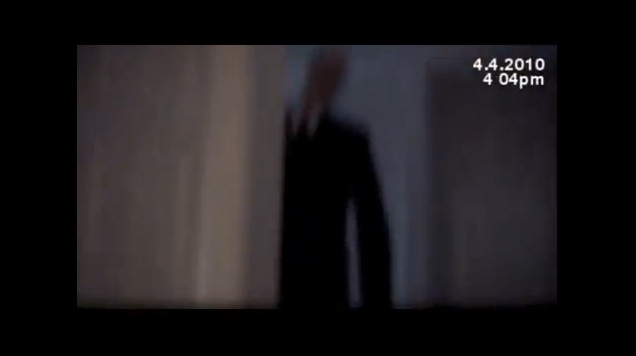

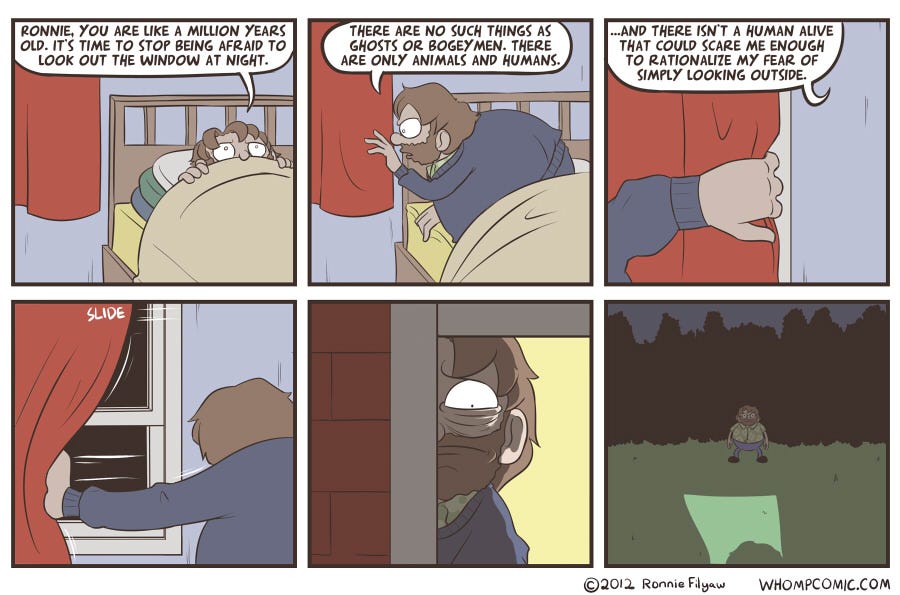



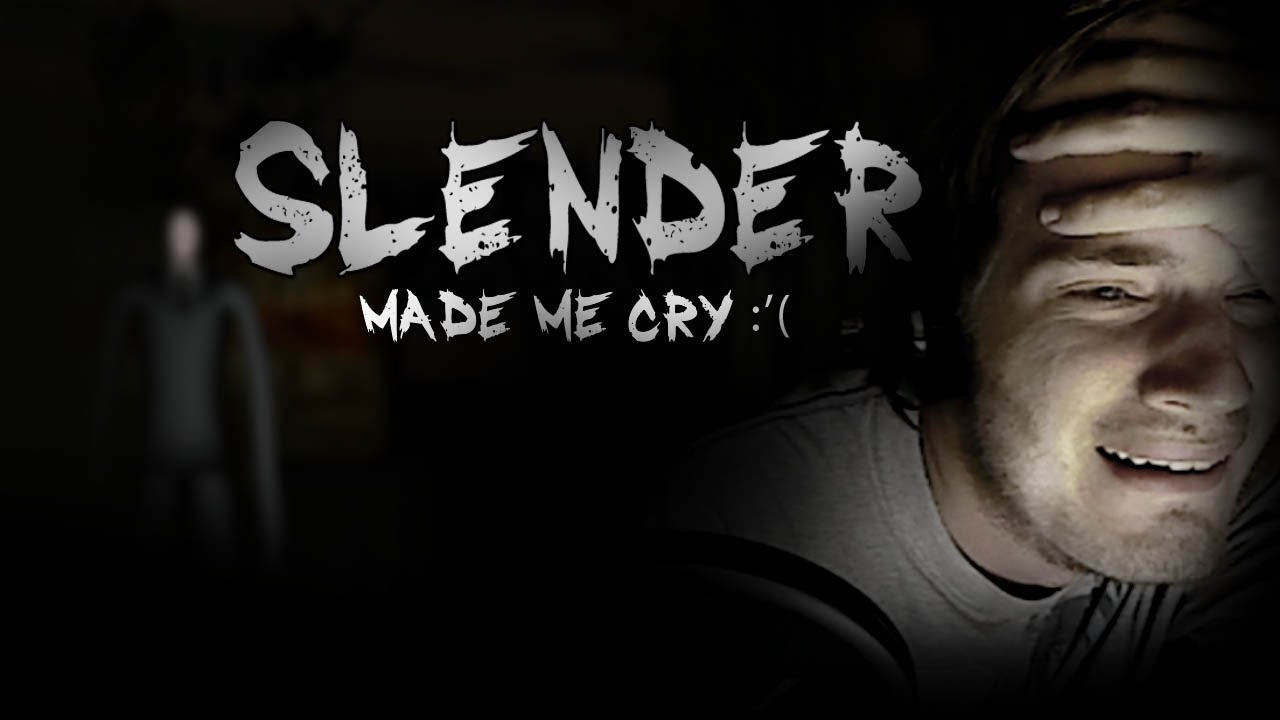
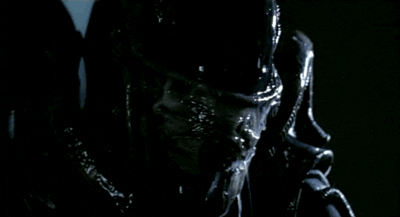
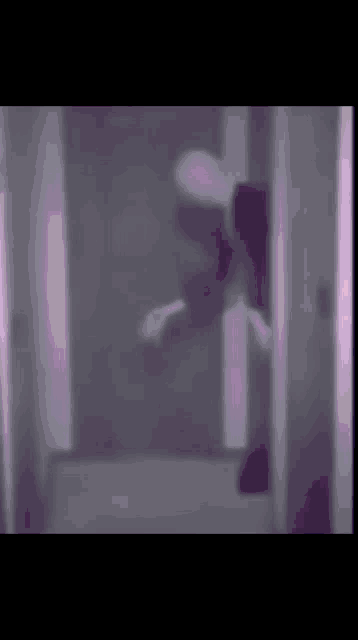


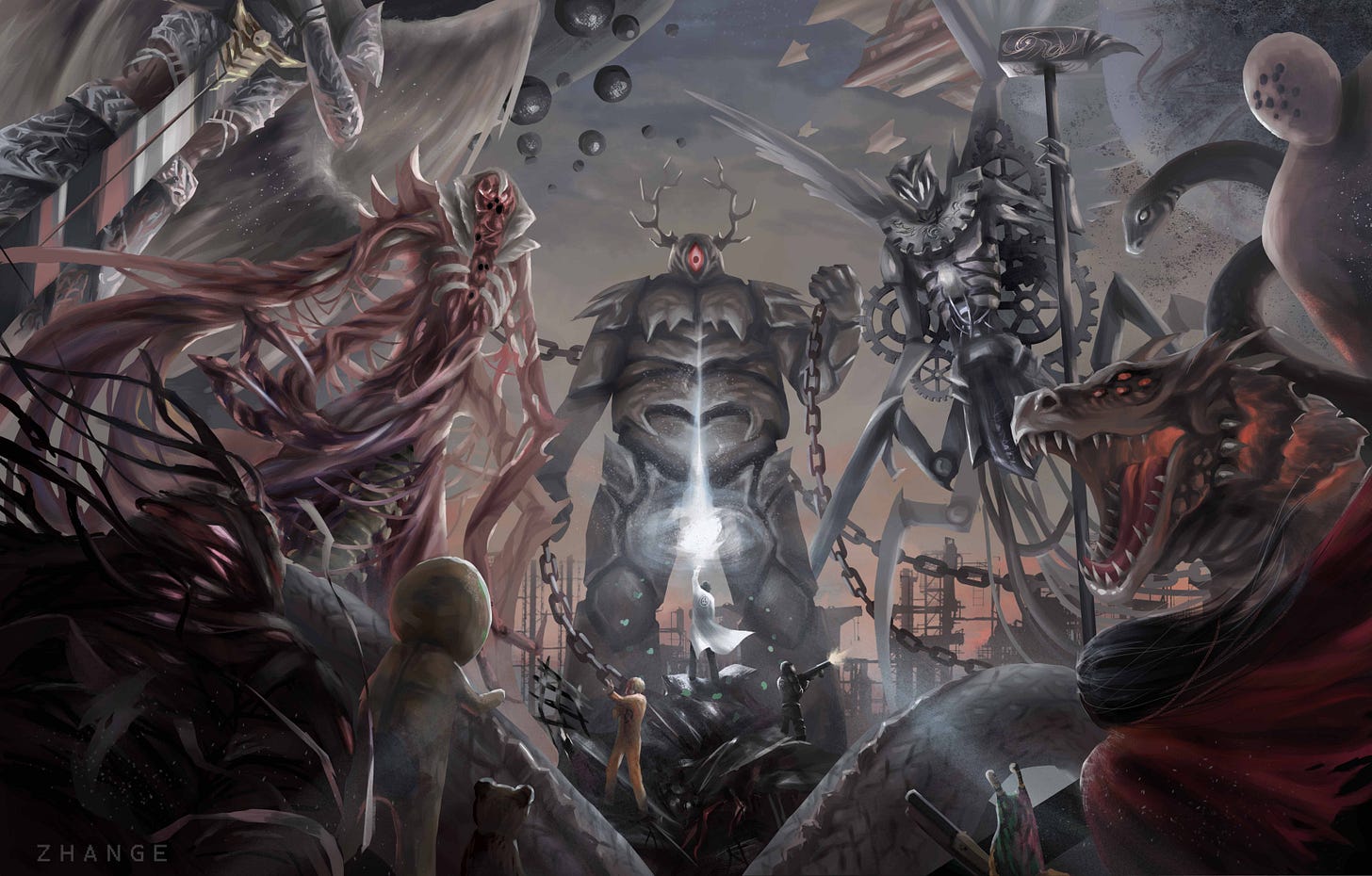
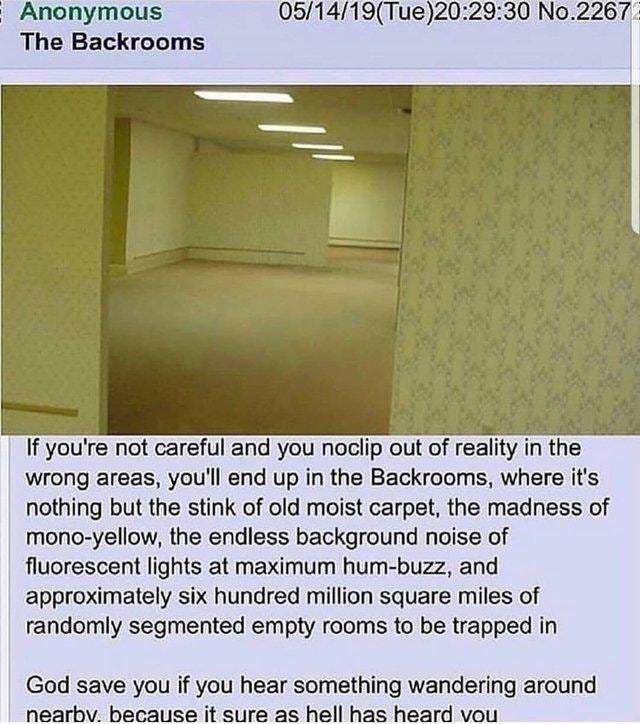
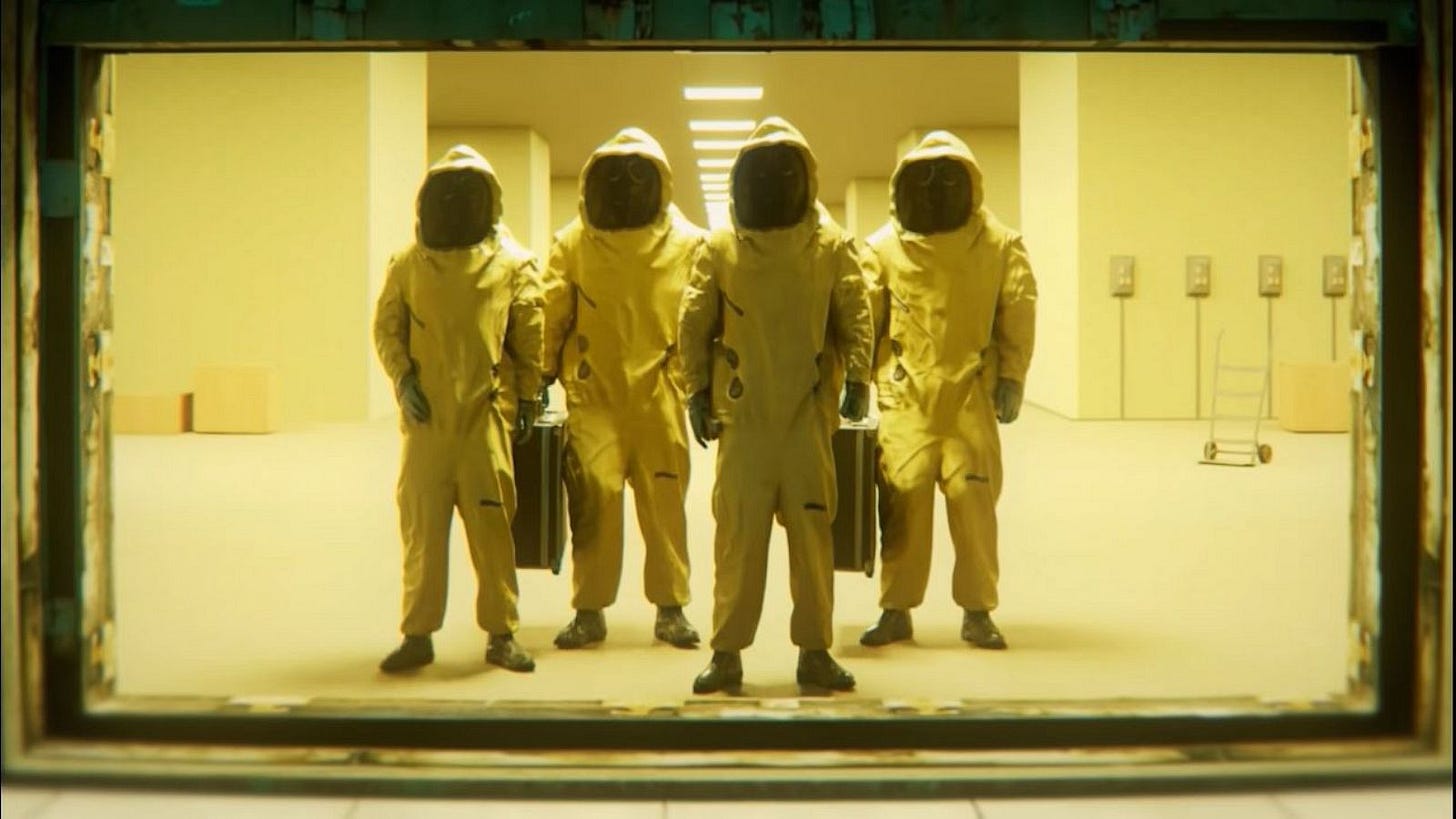


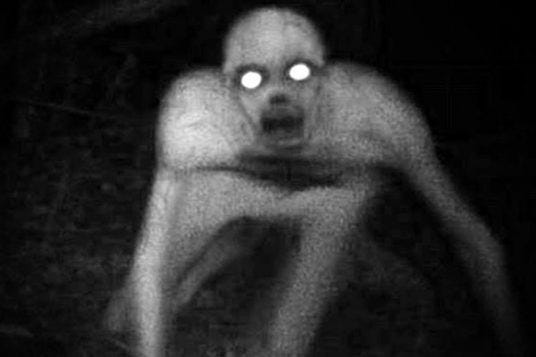
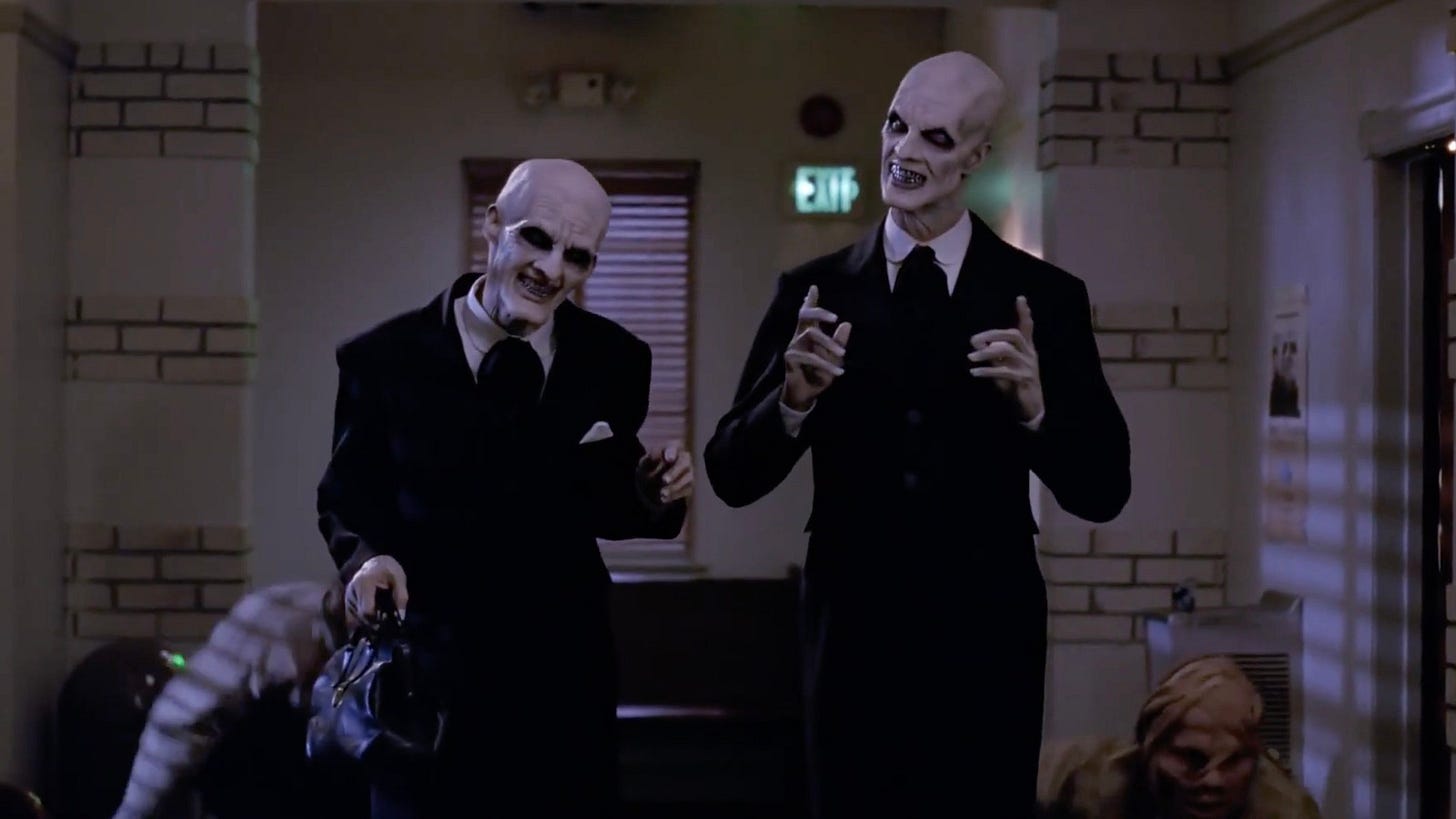
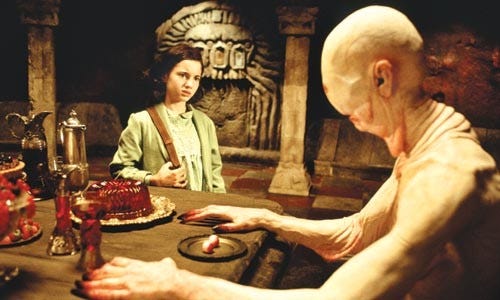
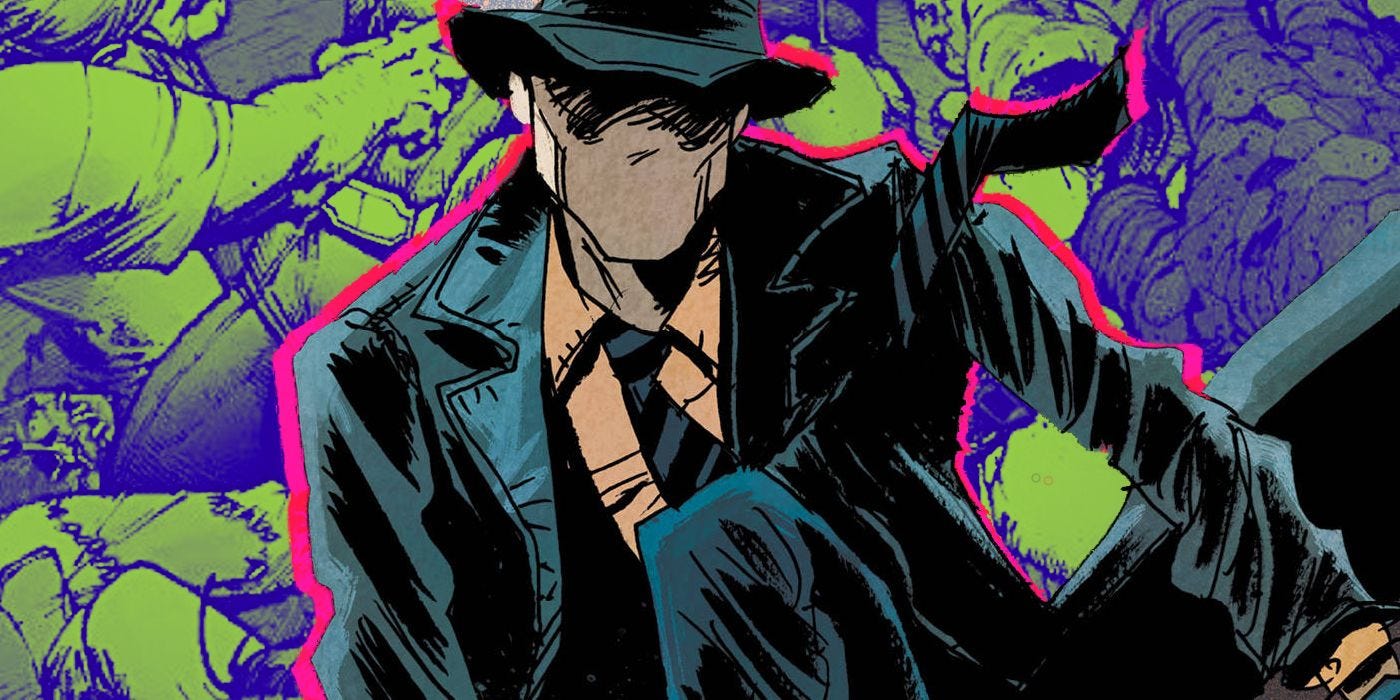

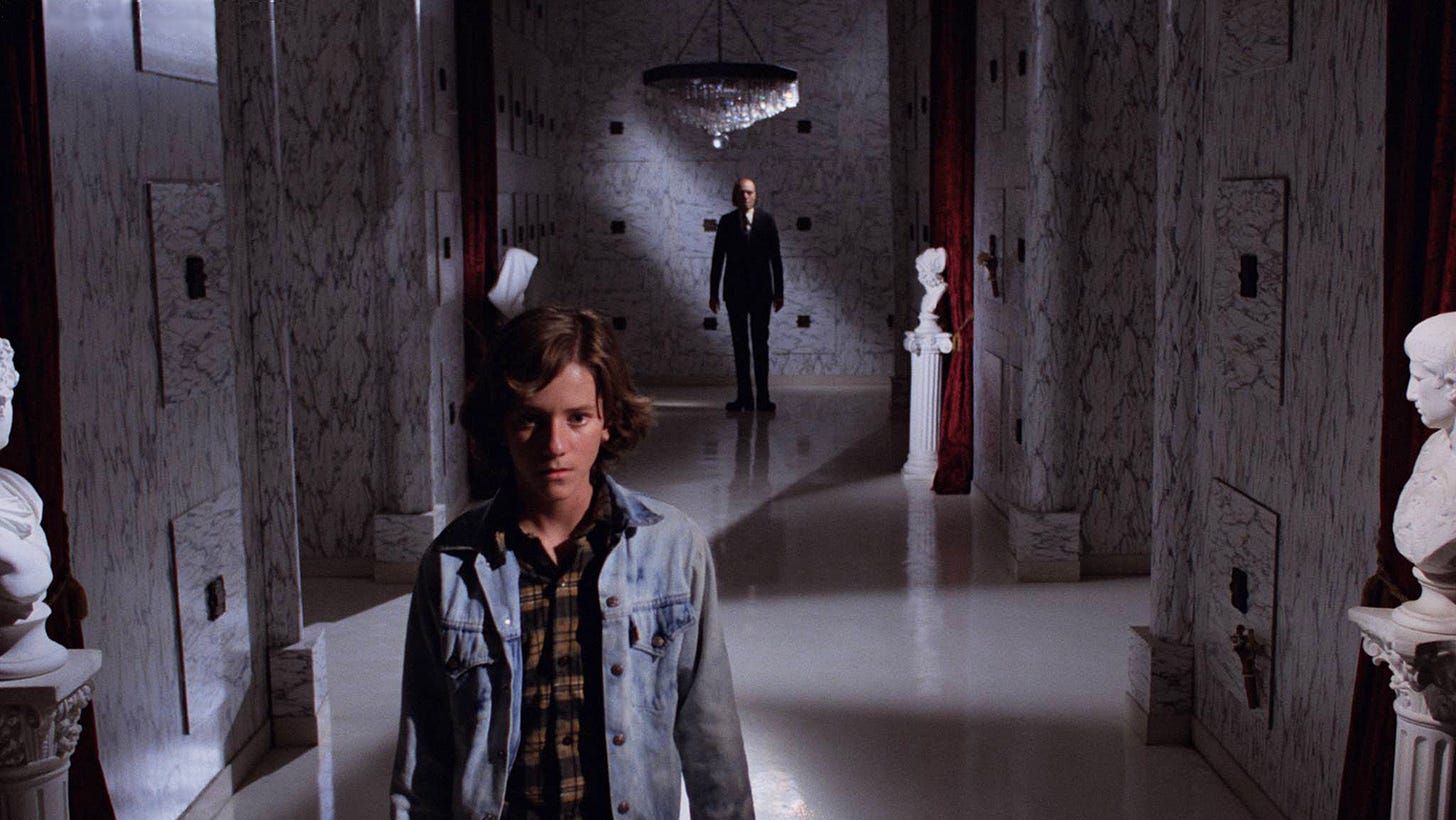




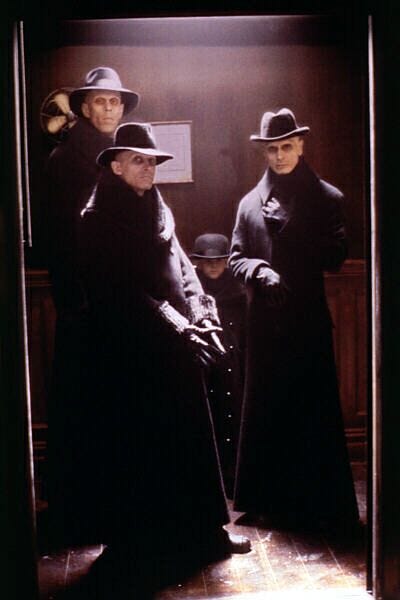
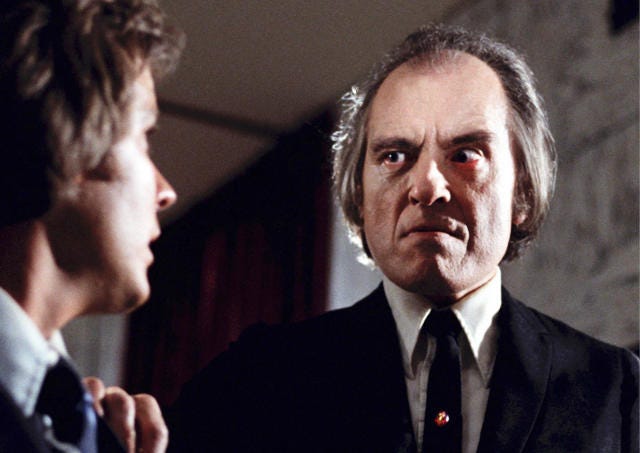
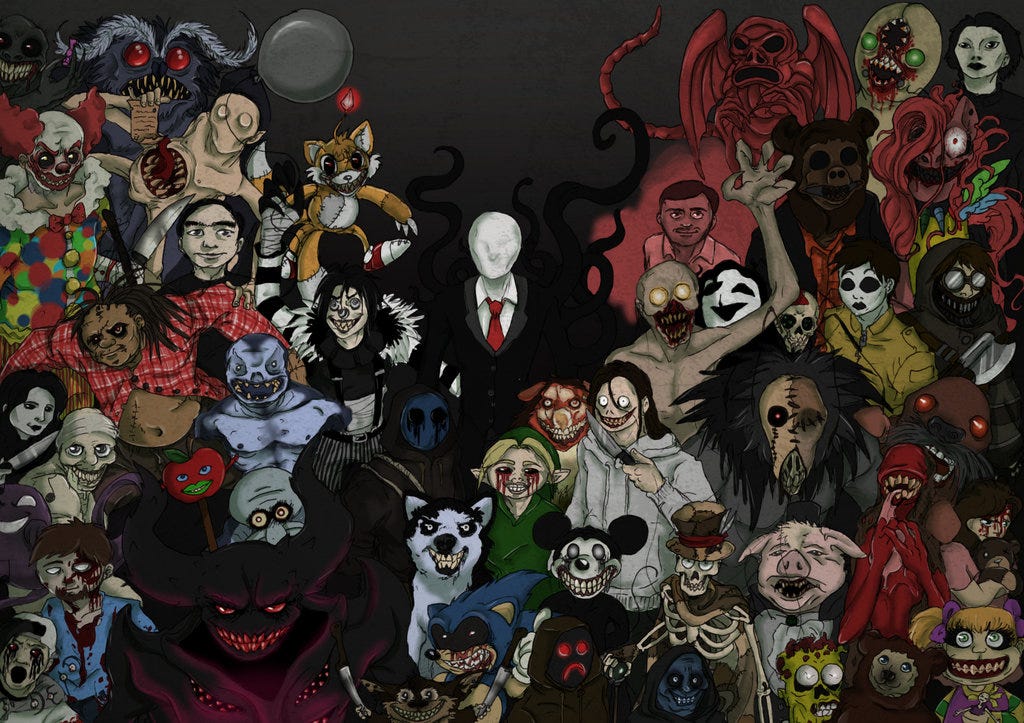





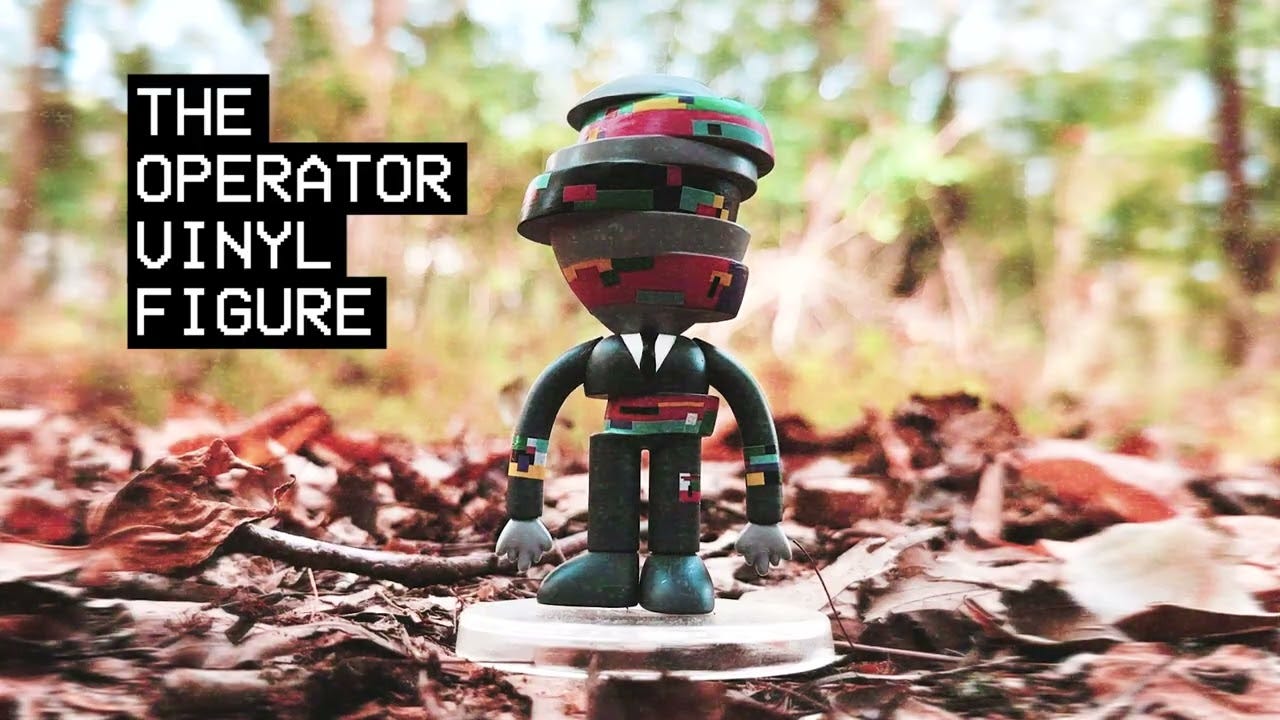
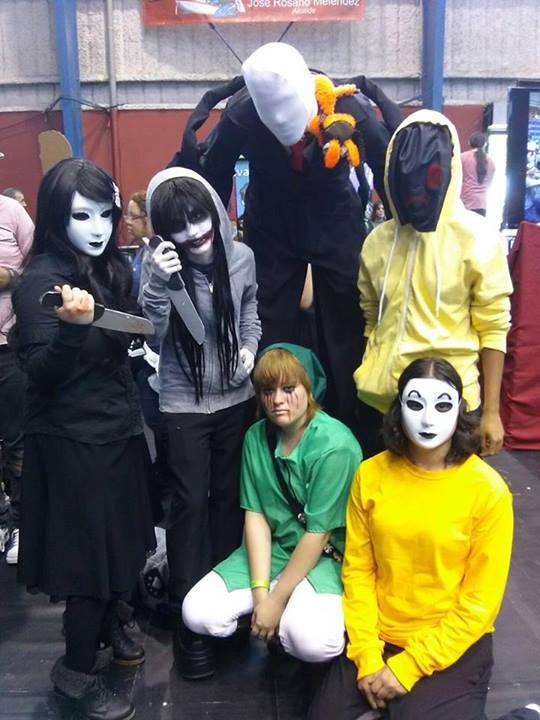
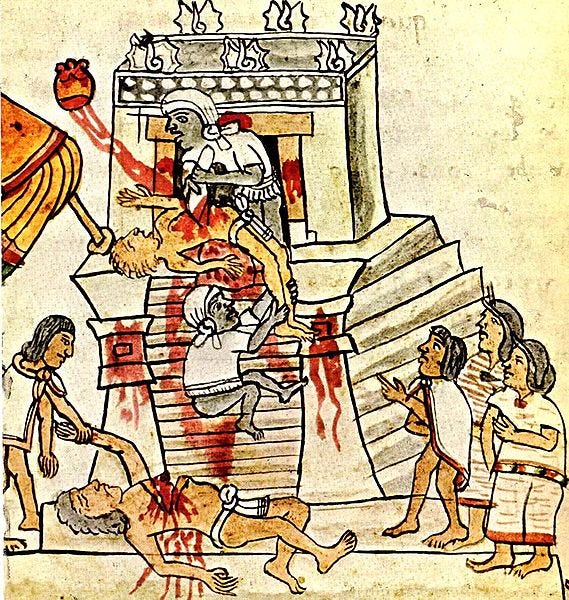
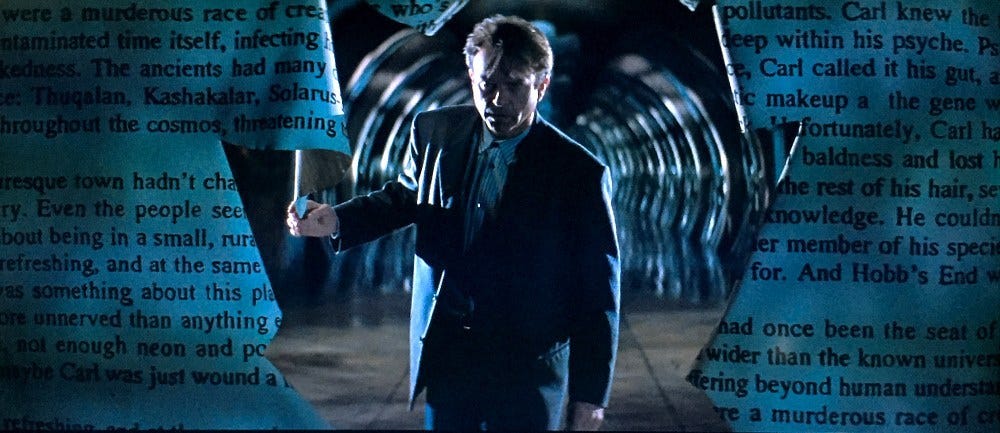


Take a look at this image depicting the Strangers from the 1998 film Dark City by Alex Proyas:
http://1.bp.blogspot.com/_60A8zsWp2jY/TT0h4YAXgVI/AAAAAAAAAk4/6jj9Ut8yA8s/s1600/dark_city_strangers.jpg
I’m guessing you haven’t seen this film, or you would have included it here. It is EXCELLENT. I give it my very highest recommendation.
The boys over at RedLetterMedia think they may have invented Slenderman. They made a crappy movie featuring a bald man in a suit standing in the woods stalking a girl. Oh, and they’re Wisconsin based.